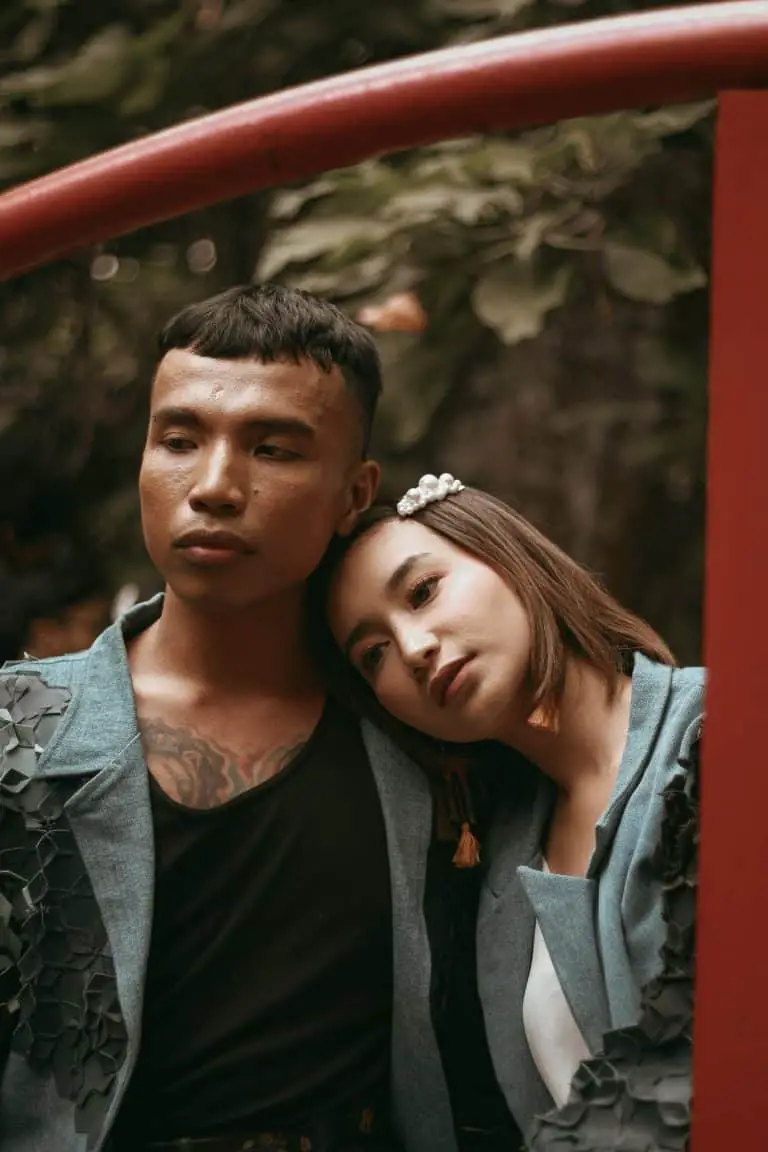The Swinging Sixties Fashion Trends were a revolution in the fashion industry, with young people at the forefront of this groundbreaking movement.
As we take a trip down memory lane, we’ll explore how boutique culture and iconic designs like the mini-skirt transformed mainstream fashion during this unforgettable era.
Mod fashion and British youth culture made waves worldwide, influenced by music icons such as The Beatles and Rolling Stones. We’ll delve into key characteristics that defined mod-style clothing while examining its impact on popular style trends.
Hippie-inspired ensembles represented counterculture ideals through vibrant patterns & styles – another fascinating aspect of The Swinging Sixties Fashion Trends. In contrast, futuristic fashions inspired by the Space Race incorporated metallics & synthetic materials into 60s attire.
We’ll also discuss Pop Art’s influence on floral patterns in 60s fashion and how it connects to today’s vintage-inspired florals resurgence. Finally, our journey will touch upon body positivity activism born from breaking traditional gender roles during this transformative period.
Table of Contents:
- The Rise of Boutique Culture: A Swinging Sixties Revolution
- Mod Fashion and British Youth Culture: Breaking Free from Conventional Norms
- Mod Fashion and British Youth Culture
- Futuristic Fashions Inspired by Space Race
- Pop Art’s Influence on Floral Patterns in 60s Fashion
- Body Positivity Activism and the Legacy of the Swinging Sixties
- Conclusion
The Rise of Boutique Culture: A Swinging Sixties Revolution
Let’s take a trip back in time to the Swinging Sixties, an era that changed the fashion industry forever.
Boutiques were popping up all over London, offering young people affordable and stylish clothing options designed by emerging talents experimenting with unconventional materials like Perspex.
But how did these small shops revolutionize fashion trends?
Impact of Boutique Culture on Mainstream Fashion Trends
The rise of boutiques challenged traditional department stores and paved the way for iconic designs such as the mini-skirt, which took the world by storm.
Mary Quant, a pioneer in this movement, opened her own boutique called Bazaar on King’s Road in 1955 and later introduced us to this daringly short skirt design.
Emergence of Iconic Designs like the Mini-Skirt
Quant wasn’t alone; other designers followed suit (pun intended), creating unique garments that catered to youth culture while pushing boundaries within conventional norms.
This shift towards individuality was fueled by music icons like The Beatles and Rolling Stones who inspired countless style trends during their reign at pop art’s peak.
Mod Fashion and British Youth Culture: Breaking Free from Conventional Norms
A significant part of Swinging Sixties’ charm was its influence on Mod fashion, a British subculture that celebrated self-expression and individuality.
But what were the key characteristics defining mod-style clothing?
Key Characteristics Defining Mod-Style Clothing
Think tailored suits, slim ties, A-line dresses, bold geometric patterns, and of course – the iconic scooter.
The Mod Movement was all about embracing modernism while rejecting traditional styles and societal expectations.
Influence of Music Icons on Popular Style Trends
Music played an essential role in shaping youth culture during this time; bands like The Beatles and Rolling Stones not only dominated the airwaves but also influenced countless fashion trends with their distinctive looks.
Inspired by these icons, young people eagerly adopted new styles as they sought to express themselves through fashion – proving that clothes could indeed make a statement.
Key Takeaway:
The Swinging Sixties saw the rise of boutique culture, which challenged traditional department stores and paved the way for iconic designs like the mini-skirt. The emergence of mod fashion celebrated self-expression and individuality, with music icons like The Beatles and Rolling Stones influencing countless style trends during their reign at pop art’s peak.
Mod Fashion and British Youth Culture
Let’s talk about the Mod Movement, shall we?
This British subculture was a game-changer for the fashion industry in the Swinging Sixties. Young people were craving self-expression and individuality like never before.
Hippie-Inspired Ensembles and Counterculture Ideals
Let’s take a journey to the past.
The Swinging Sixties witnessed the emergence of hippie culture, which had a profound impact on fashion trends. This vibrant subculture was all about embracing peace, love, and freedom of expression through clothing choices.
Whether you’re a flower child at heart or just looking to add some vintage-inspired flair to your wardrobe, remember that embracing counterculture ideals through fashion can be both fun and liberating.
Ready for more Swinging Sixties inspiration? Check out our article on The Mod Fashion Revolution and Youth Culture.
Futuristic Fashions Inspired by Space Race
Let’s blast off into the world of futuristic fashion.
The Swinging Sixties were a time when society was captivated by the space race, and this fascination found its way into fashion trends.
Andre Courreges, for example, took inspiration from aerospace technology to create innovative designs that blended architectural geometry with sports classics.
So how did these cosmic creations influence 60s fashion?
Incorporation of Metallics & Synthetic Materials into 60s Fashion Trends
Metallic fabrics and synthetic materials like PVC became all the rage during this era.
Clothing items such as space-age dresses and silver go-go boots skyrocketed in popularity among young people looking for cutting-edge styles.
Examples Showcasing Influence from Aerospace Technology within High-end Designer Collections
- Pierre Cardin’s iconic bubble dress – an avant-garde creation resembling astronaut helmets.
- Paco Rabanne’s chainmail mini-dresses made from aluminum squares linked together – perfect for intergalactic adventures.
- Rudi Gernreich’s vinyl raincoats featuring transparent panels inspired by spacecraft windows – talk about out-of-this-world style statements.
Futuristic fashions didn’t just stay on Earth – they even made it to the moon.
Andre Courreges designed a collection of “Moon Girl” fashions in 1969, just in time for the Apollo 11 lunar landing.
The ‘Moon Girl’ line included streamlined jumpsuits, headgear and glasses that would have been suitable for a spacewalk.
So next time you slip into your metallic leggings or rock a PVC mini-skirt, remember that you’re channeling the cosmic energy of Swinging Sixties fashion trends inspired by outer space exploration.
To infinity and beyond.
Pop Art’s Influence on Floral Patterns in 60s Fashion
Let’s dive into the colorful world of Pop Art and its impact on Swinging Sixties fashion trends.
As a refresher, Pop Art is an artistic movement characterized by bold colors, simple shapes, and mass-produced imagery derived from popular culture. This style had a significant influence on floral patterns during the swinging 60s era.
Connection between Pop Art Movement & Swinging Sixties Floral Patterns
The connection lies in how both styles embraced vibrant hues and striking designs to make a statement. Fashion designers drew inspiration from artists like Andy Warhol and Roy Lichtenstein, incorporating pop art elements into their creations with eye-catching results.
Resurgence of Vintage-Inspired Florals in Today’s Fashion Trends
You might have noticed that vintage-inspired florals are making quite the comeback these days among Gen-Zers who appreciate their timeless appeal. Fashionistas can’t get enough of these nostalgic prints as they add flair to any outfit while paying homage to an iconic era.
- Mix it up: Don’t be afraid to combine different floral patterns or pair them with other prints such as stripes or polka dots. Just remember – balance is key.
- Add some edge: To avoid looking too “cutesy,” try pairing your florals with edgier pieces like a leather jacket or combat boots.
- Accessorize: Complete your look with retro-inspired accessories, such as cat-eye sunglasses, chunky jewelry, or even a vintage scarf tied around your neck or hair.
So go ahead and channel your inner Twiggy by incorporating some Pop Art-inspired florals into your wardrobe. You’ll not only be paying tribute to the swinging 60s but also staying on-trend with today’s fashion scene. Happy styling.
Body Positivity Activism and the Legacy of the Swinging Sixties
Let’s explore the legacy of the Swinging Sixties and its influence on body positivity activism.
The Swinging Sixties was an era that challenged traditional gender roles, paving the way for body positivity activism we see today.
So, how did this revolution begin?
Evolution from Traditional Gender Roles to Embracing Diverse Body Types
In the 60s, young people started breaking free from societal norms and embracing self-expression through fashion trends like mod-style clothing and hippie-inspired ensembles.
This movement inspired designers to create garments that celebrated individuality over conformity – think mini-skirts and vibrant patterns.
Fast forward to today:
We’re witnessing a resurgence of body positivity activism promoting self-love and acceptance for all shapes and sizes regardless of societal expectations.
- Fashion influencers: Advocates such as Tess Holliday or Ashley Graham are using their platforms to spread awareness about body diversity in fashion industry campaigns.
- Retailers & brands: Companies like Aerie have launched inclusive sizing ranges with unretouched ad campaigns celebrating real bodies.
- Catwalk shows: Designers like Christian Siriano showcase diverse models during Fashion Week, proving that beauty comes in all shapes and sizes.
But wait, there’s more.
The Swinging Sixties’ influence on modern-day fashion trends is undeniable.
We’re seeing a revival of vintage-inspired florals and bold prints as Gen-Zers rediscover their appeal through contemporary designs.
In essence, the legacy of the Swinging Sixties continues to inspire today’s fashion industry by emphasizing individuality over conformity and promoting body positivity for all.
So let’s celebrate our uniqueness and keep pushing boundaries – just like they did back in the 60s.
Conclusion
Overall, the Swinging Sixties Fashion Trends were a time of experimentation and self-expression. Boutique culture emerged, offering affordable and trendy clothing options for the youth. Iconic fashion trends like mini-skirts symbolized liberation, while relaxed dress codes influenced high-end fashion.
The influence of music on style was significant, with rock ‘n’ roll bands inspiring popular trends and defining characteristics inspired by music icons. The Mod movement reflected countercultural values in its fashion legacy, while futuristic fashions inspired by the space race made an impact. Pop Art also had a significant role to play in shaping 1960s fashion through its unique characteristics.







